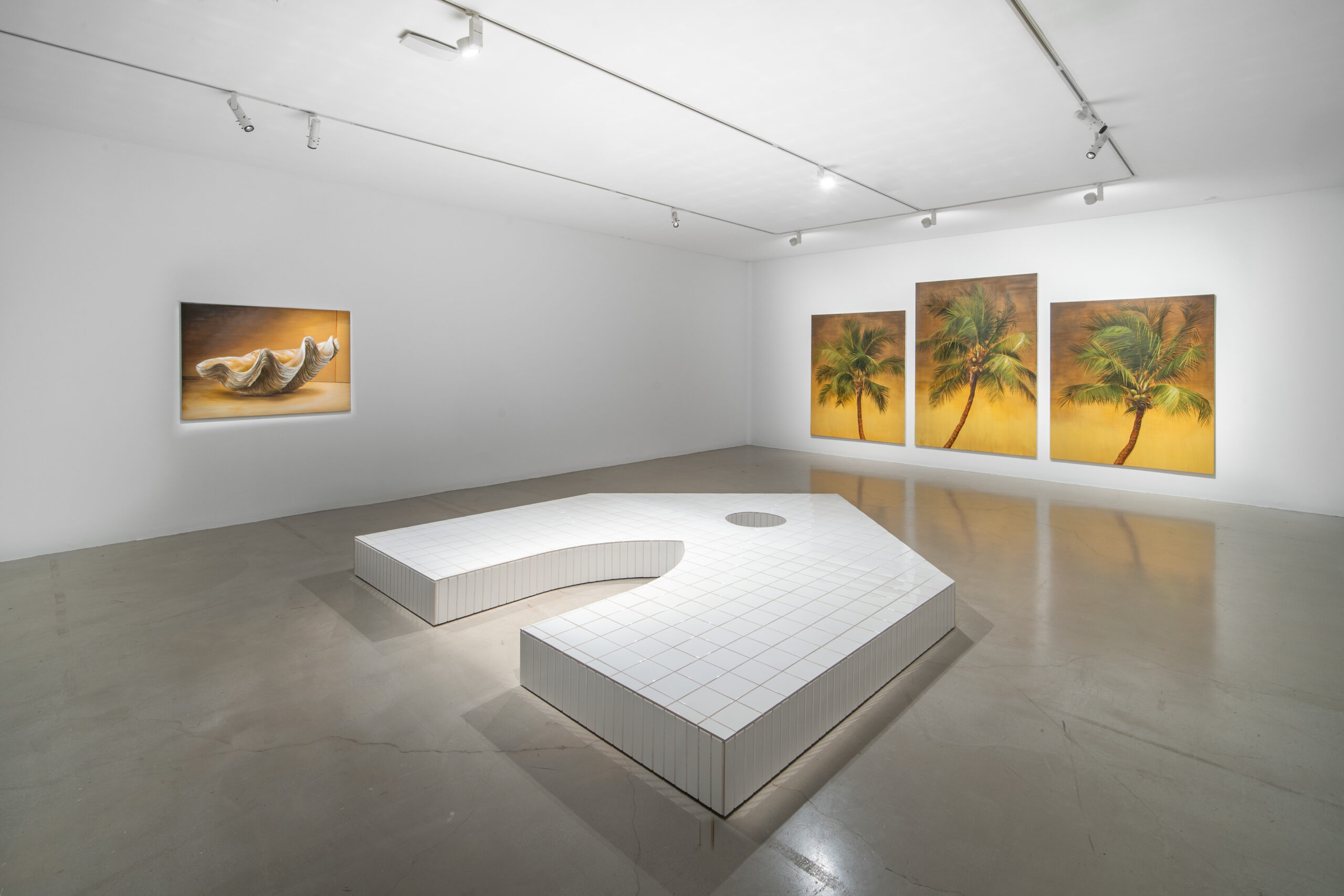
Christopher Bassi presents ‘Island Revelation’ at The National 4: Australian Art Now
29 Mar 2023
Meriam and Yupungathi man Christopher Bassi works from both a history of European figurative painting and his Torres Strait maternal ancestral heritage. Bassi is a representational painter, but it could also be said that his works are abstractions, in the conceptual sense that they enact a distillation of multiple ideas and referents from the world and his experiences.
Within the representational painting tradition, we see Bassi drawing on specific threads through centuries – from the 17th-century Spanish baroque form and texture of Diego Velázquez, through Francisco Goya’s Pinturas Negras (Black Paintings)(c.1819–23), to Édouard Manet and John Singer Sargent’s lucid portraiture. In Australia, he is inspired by the tonal painting tradition in the 20th century – the shadow and light playing against recessive spaces in works by Max Meldrum, Clarice Beckett, and William Dargie. Like these artistic antecedents, Bassi’s figures and objects speak in colour, tone, and form rather than line, conversing in taut dialogue with their shallow grounds constructed in painterly space. Bassi works in oil, building up surfaces to create particular atmospheres that evoke languid, sun-drenched heat.
In his installation Island Revelation (2023) Bassi brings temporally disjunctive histories into dialogue with each other, exploring the ways that narratives and motifs can move through time and distance to find consequence and value. Bassi has collected a group of iconographic motifs of the Torres Strait in this series of paintings – a triptych of coconut palm trees, and individual paintings of an island pigeon (Australian pied imperial pigeon), a giant clam shell and a potted red hibiscus. He is interested in how these can all function as ciphers of his personal relationship to the Torres Strait landscape – reflecting a practice of reading Country and considering it sacred – and can also be redolent of the allegorical devices of Velázquez and Goya’s Spanish Catholicism, and the Christian faiths held deeply throughout the Torres Strait.
As Bassi explains, to be from the Torres Strait often means to be away from home. (1) These objects, freighted with longing, are some of the threads that link him to ideas of place and take on a heightened significance when called upon to stand in for home. Yet Bassi does not work within nostalgia alone; he brings an incisive lens and understanding of the cultural operation of memory and the imaginary to his paintings and objects.
In addition to this group of paintings, Bassi’s installation also includes a floor-based sculptural form – a rendering in tile of the ruin of a church found at the old Poid settlement on Moa Island, close to the birthplace of his grandmother. An adaptation of Western European stone architecture, its oculus is still intact, and parts of its walls constructed with coral mortar are still standing, but its thatched roof is long gone, and the church has no longer a name or a community attached to it. It stands, like Bassi’s works, as a melding of cultures, memories, and significance across space and time, drawing on cultural inheritances across centuries and millennia, making sense of his world.
Artist text by Angela Goddard
Images: Christopher Bassi, Island Revelation, 2023, mixed media, dimensions variable, Campbelltown Arts Centre.